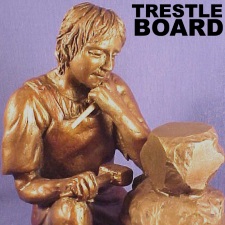
The Measure of a Modest Man The William Mercer Wilson Medal honors a particular kind of Mason: The quiet worker who seeks no reward and asks for no spotlight. He serves both within the lodge and beyond it, faithfully advancing brotherly love and the welfare of his community. Yet he does so without fanfare, preferring to see others rise while he labours steadily in the background. His character shines not in titles held but in lives uplifted.
Moreover, this recognition is reserved for a brother who, for his own reasons, has not aspired to or attained the position of Worshipful Master. He may be mild-mannered and soft-spoken, but he leads by example. He mentors generously, supports his lodge consistently, and enables others to flourish. In many lodges, his presence quietly changes the culture, he makes others feel capable, welcome, and valued. Therefore, when such a brother is recognized with the William Mercer Wilson Medal, the entire Craft applauds the virtues that define our best traditions.
The Namesake Behind the Honour The medal bears the name of William Mercer Wilson, one of the most eminent Canadians of his era. Born in Scotland in 1813, he arrived in Canada in 1832 and quickly devoted his talents to public service. In 1834 he was appointed a commissioner to hold courts of justice in the Talbot District. During the Rebellion of 1837–1838, he served as cavalry commander at Simcoe with the rank of captain, demonstrating courage and leadership in challenging times. By 1840 he was a public notary and registrar of the Surrogate Court, further anchoring his reputation for legal acumen and civic duty.
His Masonic journey began the same year, when he was admitted at St. John’s. By 1842, he became Master of the Lodge, a distinction he held at intervals for ten years. His influence expanded across the Craft and the country. In 1873, he was elected the first Grand Master of the Grand Lodge of Canada, embodying Masonic ideals at the highest level. He also remained deeply engaged in municipal life as a councilor and reeve in Simcoe, and as warden of Norfolk. He retired from the militia in 1869 with the rank of Lieutenant-Colonel, and he died on January 16, 1875, in his 62nd year, during what was counted as his eleventh year as Grand Master. His life leaves a model of service that blends public duty with fraternal devotion.
From Proposal to Practice: How the Medal Works The vision for this distinction took shape in July 1944. In his annual communication to Grand Lodge, Most Worshipful Brother Timothy Clark Wardley proposed a special medal for outstanding Masonic service. This idea became the William Mercer Wilson Medal, created to recognize exceptional service by a brother who has not served as Worshipful Master of a Craft Lodge. Consequently, the medal shifts the spotlight toward those who uplift others and uphold the Craft through steady, selfless commitment rather than office or rank.
The awarding of this honour carries privileges that reflect the esteem of the Craft. The holder of the William Mercer Wilson Medal is entitled to sit in the East, just as one who has served as Worshipful Master. He also receives grand honours, underscoring the fraternity’s gratitude. Furthermore, lodges should acknowledge his presence in toasts and tributes whenever he attends. Therefore, Tylers’ and Directors of Ceremonies should remain vigilant in identifying visiting medal holders. It is also helpful for any accompanying brother to inform the Master, Tyler, and Director of Ceremonies of the recipient’s presence so that due courtesies are properly extended.
Why This Recognition Matters Now In every age, lodges need both visible leaders and quiet stewards. The William Mercer Wilson Medal ensures that the latter are not overlooked. It reminds us that the Craft thrives not solely on oratory and office, but on steady hands and humble hearts. These brethren mentor without boasting, support without prompting, and contribute without counting the cost. When they are recognized, the membership sees clearly which virtues the Craft prizes most.
Additionally, the medal speaks to the integrity of Masonic culture. It celebrates service as an end in itself, rather than a path to title. It reinforces the truth that meaningful leadership often wears the garb of modesty. By honoring the brothers who have given others the opportunity to lead, we reinforce a lodge culture of generosity, continuity, and shared success. In this way, the medal does more than reward past service; it sets a standard for the future.
These worthy brethren deserve to be recognized.

